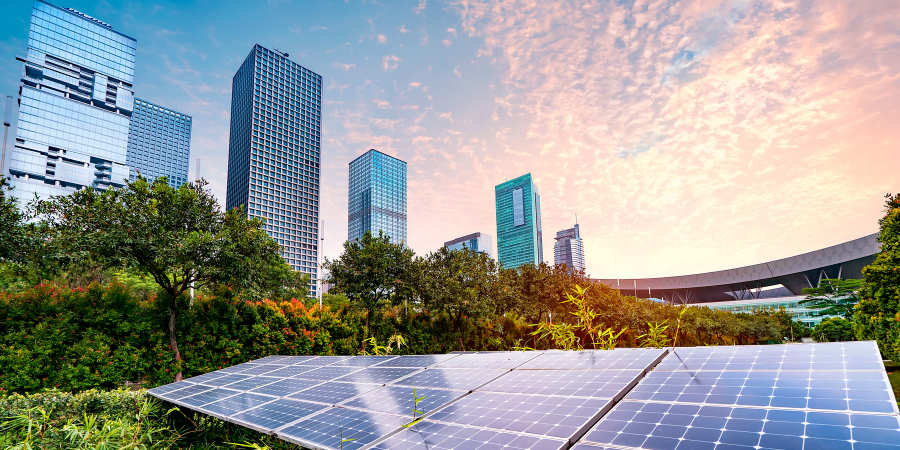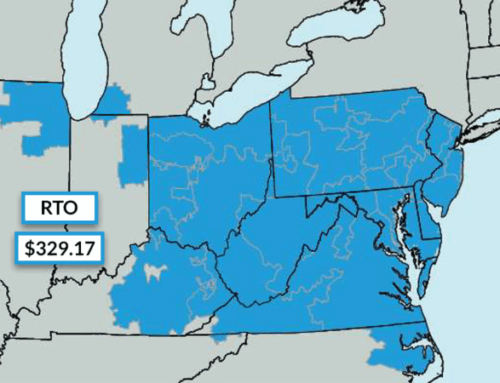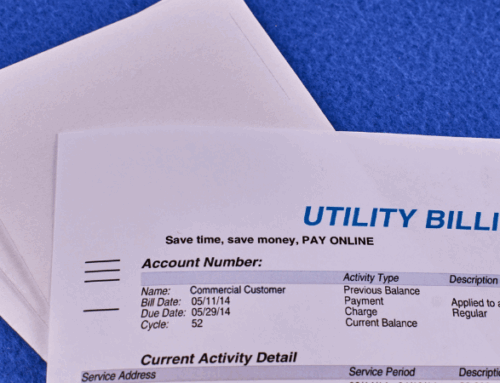Energy investment is shaping the future of the global energy transition, driving innovation and growth in renewables, infrastructure, and sustainability initiatives. Whether driven by the need to address climate change or energy security, global energy investment trends are shaping how power is produced, distributed, and consumed. For commercial energy customers, staying on top of these trends can mean cost savings, faster renewable energy adoption, and future-proofing energy strategies. In this article, we’ll look at energy investment, renewable energy investment, 2025 market forecasts, and what it means for commercial and industrial energy customers.
Energy Investment: An Overview
Energy investments in 2024 and into 2025 have been centered around renewable energy technologies, grid transmission upgrades, and energy efficiency solutions. Let’s look at how money is being spent in the energy sector today in the U.S. and across the globe.
Global and U.S. Trends
Global energy investment is growing as emerging energy markets invest in infrastructure, renewable energy, and energy security. According to the International Energy Agency (IEA), global energy investment was $2.7 trillion in 2023, with renewable energy and electricity transmission networks accounting for most of the growth.
In the U.S., energy investment has grown due to energy policy initiatives such as the Inflation Reduction Act (IRA). These policies have accelerated the adoption of renewable energy technologies, like solar, battery storage, electric vehicle infrastructure, and funding for grid modernization. These investments have enabled the transition from traditional fossil-fuel-driven energy to more sustainable means of production and transmission.
Historical Investment and the Future Energy Transition
Historically, energy investment has been in traditional sources like coal, oil, and natural gas. But, the pandemic and subsequent economic recovery have proven that we need a more resilient and diversified energy mix.
Governments have since doubled down on decarbonization strategies, and the markets have seen increased investment in renewable energy and energy efficiency. This transition from fossil fuels to low-carbon energy is now the defining feature of the global energy market. Furthermore, net zero policies being adopted by large organizations have secured clean energy investment as the key to a sustainable future.
Investment by Power Type
As we dive deeper into these investments in the energy sector, we must consider the various power-generating sources funded by investors and developers alike. Some of these new investments include…
Traditional Energy Sources
Despite the global drive for decarbonization, investment in traditional energy sources like natural gas peaker plants, fracking, and oil drilling is still a substantial part of the overall market. Natural gas is seen as a bridge fuel because of its lower emissions compared to coal and oil. Its new role in supporting grid stability allows for the integration of intermittent renewable energy sources like wind and solar. For example, natural gas co-generation systems are being deployed to back up renewable energy projects and provide grid stability.
On the other hand, investment in coal-fired power has fallen sharply as countries have introduced stricter emissions regulations and continue to divest from fossil fuels.
Renewable Energy
Renewable energy investment is at record levels, accounting for nearly 60% of global energy investment in 2023. Renewable energy sources like wind, solar, and hydropower have seen dramatic price reductions over the past decade and are now less expensive than traditional fossil fuels.
Solar is at the center of the renewable energy global investment with falling costs and widespread adoption by both the residential and commercial sectors. Commercial energy customers are increasingly turning to commercial solar solutions, such as rooftop solar and power purchase agreements (PPAs) to lock in long-term savings and hedge against volatile power prices.
Battery Storage
Battery storage is quickly becoming a key to the renewable energy transition. By storing excess energy from renewables, batteries provide grid stability and power during peak demand periods. Furthermore, battery assets are being used by grid operators and utilities to participate in ancillary energy markets as an additional resource to stabilize grid frequency and enhance energy security. Battery storage investment is expected to grow rapidly as technology improves and costs fall.
Natural Gas Co-Generation
While natural gas is a fossil fuel, co-generation systems are emerging as an efficient solution for industrial and commercial use. These systems, which are typically installed on-site at a customer’s facility, generate electricity and heat at the same time. They can be used for power backup, to supplement intermittent on-site solar generation, and are more efficient than traditional power generation.
2025 Energy Investment Forecast
When looking at renewable energy trends in 2025 and investment trends of the future, it is expected that energy investment will grow further in 2025. Renewable energy and energy storage will be at the forefront of these investments. Here are our key predictions for the coming year:
- Increased distributed energy resource (DER) adoption (rooftop solar, natural gas co-gen, and batteries will lead the way).
- Offshore wind projects in the U.S. and Europe will grow.
- Utility-scale battery storage will be deployed faster and will be significantly utilized by grid operators for system stability.
- Policy-driven incentives (tax credits and subsidies) will continue to play a critical role in financing these projects.
Challenges
Despite the good news, there are several challenges in the way of reaching global energy investment targets:
- Supply Chain Issues: Raw material shortages and manufacturing bottlenecks will slow down renewable energy deployment. Materials needed for battery production are hard to come by and are often found in conflict-ridden countries.
- Lack of Financing: Developing countries and emerging energy markets struggle to get financing for renewable energy projects. There is a lack of transparency in banking systems, corruption, and difficulty securing reliable off-takers for these projects.
- Aging Grids: Many regions have aging electric grid systems that need to be modernized to accommodate renewable energy. Older transmission lines create line losses that can result in lost revenue and profits for renewable energy developers.
- Energy Policy Hurdles: Shifting political priorities and regulatory hurdles will disrupt energy investment planning. While there are many favorable policies in place today supporting renewables, interconnection cues are at an all-time high, and getting new projects approved has proven to be difficult.
What This Means for Energy Customers
For commercial energy customers, these trends present opportunities and challenges. On one hand, low-carbon energy sources and energy efficiency technologies can deliver big savings and a lower carbon footprint. On the other hand, navigating the energy market and getting competitive renewable energy purchase agreements requires expertise. Commercial energy customers can use the services of experienced energy brokers to help them optimize their energy procurement process and access new energy products.
Contact Our Team Today
The energy landscape is changing fast. Decarbonization, renewable energy, and energy security are the drivers of this transition. For businesses, understanding these trends is key to a sustainable and cost-effective energy strategy. Whether it’s renewable energy, energy efficiency, or battery storage, the options are endless. Contact our team of energy market experts today to learn more about new energy technologies and how they can impact your bottom line.



